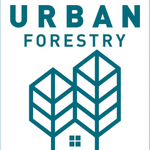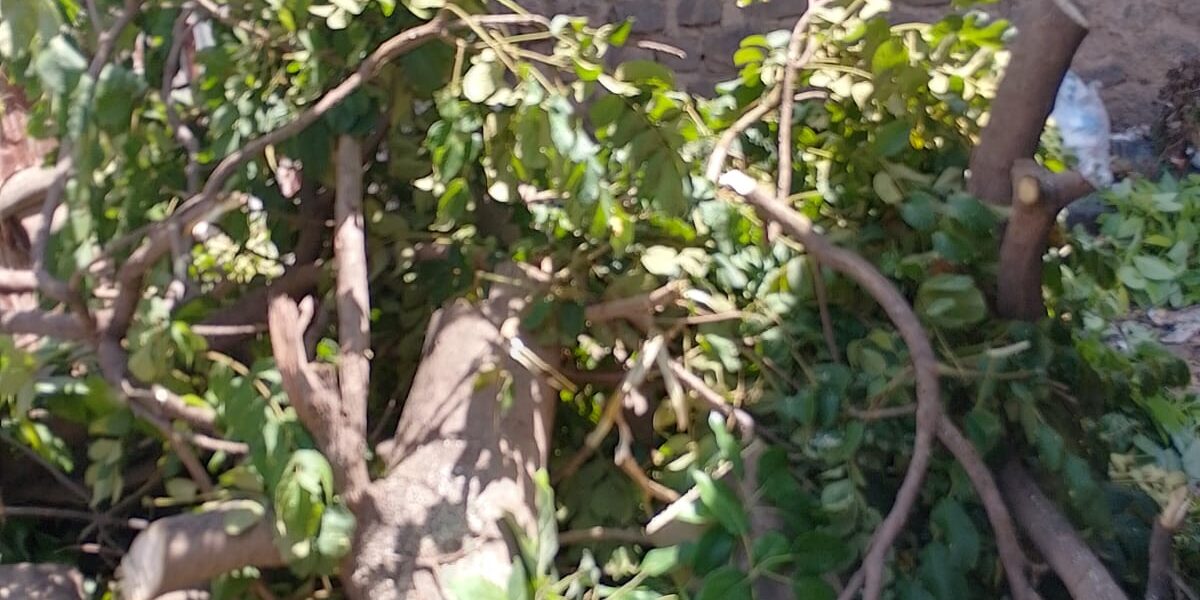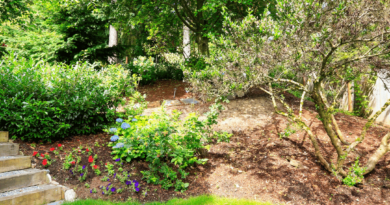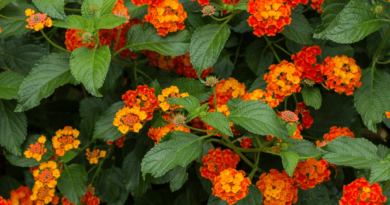Overview of Urban Tree Pruning and its importance
Urban trees stand as silent sentinels, playing a pivotal role in enhancing urban life quality through a multitude of ecosystem services, from air quality improvement to urban heat island mitigation. However, the practice of tree pruning, a fundamental aspect of urban tree care for safety, aesthetic, and health reasons, poses significant impacts on these ecosystem services. This article delves into the nuanced effects of urban tree pruning on ecosystem services, underpinned by a case study from Perugia, Italy, as explored in the comprehensive study “Effects of Urban Tree Pruning on Ecosystem Services Performance” published in Trees, Forests and People.
The Practice of Urban Tree Pruning
Urban tree pruning, primarily aimed at reducing wind-break risk, ensuring road visibility, and minimizing infrastructure damage, has been a double-edged sword. While necessary for urban safety and aesthetic purposes, improper pruning techniques can enhance tree disease susceptibility and affect their capacity to provide vital ecosystem services.
Impacting Ecosystem Services: Carbon Sequestration and Air Quality
The study focused on evaluating the effect of different pruning scenarios on particulate matter (PM10) capture and carbon dioxide (CO2) stock performance across twelve tree species in Perugia. It was found that pruning, when managed properly, can significantly influence the carbon stock and air purifying capabilities of urban trees.
Perugia’s Pruning Practices: A Case Study
In Perugia, ordinary and extraordinary pruning practices are implemented to manage urban trees, with the study revealing that more frequent and less intense pruning could optimize ecosystem service performance. This approach minimizes the risk of branch dieback and maximizes the trees’ contributions to urban well-being.
Carbon Stock and PM10 Capturing: Methodological Insights
The research employed a novel approach to estimate the total carbon balance and PM10 capturing efficiency of urban trees under different pruning scenarios. Surprisingly, the results indicated an opportunity to increase crown carbon stock by up to 65%, emphasizing the need for carefully planned pruning strategies.
Sustainable Waste Wood Disposal: Environmental Considerations
The disposal of pruning residues emerged as a critical factor in the study, with various methods such as anaerobic digestion and industrial composting evaluated. The open dump scenario, although less conventional, was found to be the most CO2-efficient disposal method, raising important considerations for urban forestry management.
Towards Sustainable Urban Forestry: Policy Implications
The findings from Perugia serve as a valuable guide for urban forestry management worldwide. By adopting regular, moderate pruning practices and incorporating sustainable waste disposal methods, cities can enhance their green infrastructure’s ecosystem service provision, contributing to broader environmental and public health goals.
Conclusion: Pruning for a Greener Future
Urban tree pruning, a practice as old as urban planning itself, holds significant implications for the health and functionality of urban ecosystems. Through careful strategy and consideration of the lessons learned from Perugia, urban forestry management can navigate the delicate balance between maintaining safe, beautiful urban landscapes and maximizing the environmental benefits that trees offer. As cities continue to grow, the role of urban trees and the practices that support their health and services will undoubtedly become even more crucial.
References
Badrulhisham, N., Othman, N., 2016. Knowledge in tree pruning for sustainable practices
in urban setting: improving our quality of life. Procedia – Soc. Behav. Sci. 234,
210–217. https://doi.org/10.1016/j.sbspro.2016.10.236.
Boschiero, M., Kelderer, M., Schmitt, A.O., Andreotti, C., Zerbe, S., 2015. Influence of
agricultural residues interpretation and allocation procedures on the environmental
performance of bioelectricity production – a case study on woodchips from apple
orchards. Appl. Energy 147, 235–245. https://doi.org/10.1016/j.
apenergy.2015.01.109.
Carvalho, M., Vieira Araújo, Y.R., Lins de G´ois, M., Moreira Coelho Jr., L., 2019. Urban
pruning waste: Carbon footprint associated with energy generation and prospects for
clean development mechanisms. Revista Arvore 43 (4), 1–11. https://doi.org/
10.1590/1806-90882019000400005.
Clark, J., Matheny, N., 2010. The research foundation to tree pruning: a review of the
literature. Arboric. Urban For. 36 (3), 110–120. https://doi.org/10.48044/
jauf.2010.015.
Dujesiefken, D., Stobbe, H., 2002. The hamburg tree pruning system – a framework for
pruning of individual trees. Urban For. Urban Green. 1 (2), 75–82. https://doi.org/
10.1078/1618-8667-00008.
Fazio, J.R., Krumpe, E.E., 1999. Underlying beliefs and attitudes about topping trees.
J. Arboric. 25 (4), 193–198. https://doi.org/10.48044/jauf.1999.028.
Fini, A., Frangi, P., Faoro, M., Piatti, R., Amoroso, G., Ferrini, F., 2015. Effects of different
pruning methods on an urban tree species: a four-year-experiment scaling down
from the whole tree to the chloroplasts. Urban For. Urban Green. 14 (3), 664–674.
https://doi.org/10.1016/j.ufug.2015.06.011.
Fusaro, L., Salvatori, E., Mereu, S., Marando, F., Scassellati, E., Abbate, G., Manes, F.,
2015. Urban and peri-urban forests in the metropolitan area of Rome:
Ecophysiological response of Quercus ilex L. in two green infrastructures in an
ecosystem services perspective. Urban For. Urban Green. 14 (4), 1147–1156.
https://doi.org/10.1016/j.ufug.2015.10.013.
Gilman, E.F., Grabosky, J.C., 2006. Branch union morphology affects decay following
pruning. Arboric. Urban For. 32 (2), 74–79. https://doi.org/10.48044/
jauf.2006.010.
Gilman, E.F., Knox, G.W., 2005. Pruning type affects decay and structure of crapemyrtle.
J. Arboric. 31 (1), 48–53. https://doi.org/10.48044/jauf.2005.006.
Grohmann, D., Petrucci, R., Torre, L., Micheli, M., Menconi, M.E., 2019. Street trees
management perspectives: Reuse of Tilia sp.’s pruning waste for insulation purposes.
Urban For. Urban Green. 38, 177–182. https://doi.org/10.1016/j.ufug.2018.12.009.
Hill, C., Hughes, M., Gudsell, D., 2021. Environmental impact of wood modification.
Coatings 11, 366. https://doi.org/10.3390/coatings11030366.
Hosek, L.K., Roloff, A., 2015. Relations between cityscape-related and palm-inherent
variables and the pruning state of urban Arecaceae suggest three reasons for
overpruning. Urban For. Urban Green. 14 (4), 975–981. https://doi.org/10.1016/j.
ufug.2015.08.013.
Huang, B., Gao, X., Xu, X., Song, J., Geng, Y., Sarkis, J., Fishman, T., Kua, H.,
Nakatani, J., 2020. A life cycle thinking framework to mitigate the environmental
impact of building materials. One Earth 3 (5), 564–573. https://doi.org/10.1016/j.
oneear.2020.10.010.
Kosmala, M., Rosłon-Szery´nska, E., Suchocka, M., 2008. Influence of mechanical damage
on the condition of trees. Ann. Warsaw Univers. Life Sci. – SGGW, Hortic. Landsc.
Arch. 137–144.
Lan, K., Zhang, B., Yao, Y., 2022. Circular utilization of urban tree waste contributes to
the mitigation of climate change and eutrophication. One Earth 5 (8), 944–957.
https://doi.org/10.1016/j.oneear.2022.07.001.
Leal Filho, W., Wolf, F., Castro-Díaz, R., Li, C., Ojeh, V.N., Guti´errez, N., Nagy, G.J.,
Savi´c, S., Natenzon, C.E., Quasem Al-Amin, A., et al., 2021. Addressing the urban
heat islands effect: a cross-country assessment of the role of green infrastructure.
Sustainability 13, 753. https://doi.org/10.3390/su13020753.
Ling, P.Y., Prince, S., Baiocchi, G., Dymond, C., Xi, W., Hurtt, G., 2020. Impact of fire and
harvest on forest ecosystem services in a species-rich area in the southern
Appalachians. Ecosphere 11 (6). https://doi.org/10.1002/ecs2.3150.
Livesley, S.J., McPherson, E.G., Calfapietra, C., 2016. The urban forest and ecosystem
services: impacts on urban water, heat, and pollution cycles at the tree, street, and
city scale. J. Environ. Qual. 45 (1), 119–124. https://doi.org/10.2134/
jeq2015.11.0567.
Maruthaveeran, S., Yaman, A.R., 2010. The identification of criteria and indicators to
evaluate hazardous street trees of Kuala Lumpur, Malaysia: A Delphi study. J. For.
108 (7), 360–364.
Maurin, V., DesRochers, A., 2013. Physiological and growth responses to pruning season
and intensity of hybrid poplar. Forest Ecol. Manage. 304, 399–406. https://doi.org/
10.1016/j.foreco.2013.05.039.
Doick, K.J., Hutchings, T., 2013. Air temperature regulation by urban trees and green
infrastructure. Forest Res. For. Commission UK. ISBN: 978-0-85538-878-2.
Morison, J., Matthews, R., Miller, G., Perks, M., Randle, T., Vanguelova, E., White, M.,
Yamulki, S., 2012. Understanding the carbon and greenhouse gas balance of forests
in Britain. Res. Rep. For. Commission, UK (018). ISBN 978-0-85538-855-3.
Nasser, R.A., Salem, M.Z.M., Al-Mefarrej, H.A., Aref, I.M., 2016. Use of tree pruning
wastes for manufacturing of wood reinforced cement composites. Cem. Concr.
Compos. 72, 246–256. https://doi.org/10.1016/j.cemconcomp.2016.06.008.
Nowak, D.J., Stevens, J.C., Sisinni, S.M., Luley, C.J., 2002. Effects of urban tree
management and species selection on atmospheric carbon dioxide. J. Arboric. 28 (3),
113–122. https://doi.org/10.48044/jauf.2002.017.
O’Hara, K.L., 1991. A biological justification for pruning in coastal douglas-fir stands.
Western J. Appl. For. 6 (3), 59–63. https://doi.org/10.1093/wjaf/6.3.59.
Orlandi, F., Ranfa, A., Proietti, C., Ruga, L., Ventura, F., Fornaciari, M., 2022a. Dynamic
estimates of tree carbon storage and shade in Mediterranean urban areas. Int. For.
Rev. 24 (2), 225–239. https://doi.org/10.3832/ifor3908-015.
Orlandi, F., Fornaciari, M., Ranfa, A., Proietti, C., Ruga, L., Meloni, G., Burnelli, M.,
Ventura, F., 2022b. LIFE-CLIVUT, ecosystem benefits of urban green areas: a pilot
case study in Perugia (Italy). iForest – Biogeosci. For. 15 (2), 133–140. https://doi.
org/10.3832/ifor3908-015.
Pereira Bispo, L.F., Nolasco, A.M., Costa de Souza, E., Klingenberg, D., Dias Júnior, A.F.,
2021. Valorizing urban forestry waste through the manufacture of toys. Waste
Manage. 126, 351–359. https://doi.org/10.1016/j.wasman.2021.03.028.
Pinkard, E.A., Beadle, C.L., 1998. Effects of green pruning on growth and stem shape of
Eucalyptus nitens (Deane and Maiden) Maiden. New Forests 15 (2), 107–126.
https://doi.org/10.1023/A:1006533423884.
Pinkard, E.A., Beadle, C.L., 2000. A physiological approach to pruning. Int. For. Rev. 2
(4), 295–305. https://www.jstor.org/stable/42609327.
Ramirez, J.A., 2017. The functional role of carbohydrate reserves in the growth and
survival of trees. PhD th´esis, D´epartement des Sciences Biologiques, l’Universit´e du
Qu´ebec `a Montr´eal, Montr´eal, Qu´ebec. (April).
Ramirez, J.A., Handa, I.T., Posada, J.M., Delagrange, S., Messier, C., 2018. Carbohydrate
dynamics in roots, stems, and branches after maintenance pruning in two common
urban tree species of North America. Urban For. Urban Green. 30, 24–31. https://
doi.org/10.1016/j.ufug.2018.01.013.
Shigo, A.L., 1984. Tree decay and pruning. Arboric. J. 8 (1), 1–12. https://doi.org/
10.1080/03071375.1984.9746646.
Sj¨oman, H., Busse Nielsen, A., 2010. Selecting trees for urban paved sites in Scandinavia –
a review of information on stress tolerance and its relation to the requirements of
tree planners. Urban For. Urban Green. 9 (4), 281–293. https://doi.org/10.1016/j.
ufug.2010.04.001.
Sj¨oman, H., ¨Ostberg, J., Bühler, O., 2012. Diversity and distribution of the urban tree
population in ten major Nordic cities. Urban For. Urban Green. 11 (1), 31–39.
https://doi.org/10.1016/j.ufug.2011.09.004.
Smiley, E.T., Kane, B., 2006. Drag coefficients and crown area estimation of red maple.
Canad. J. Forest Res. 36 (8), 1951–1958. https://doi.org/10.1139/X06-086.
Speak, A., Escobedo, F.J., Russo, A., Zerbe, S., 2020. Total urban tree carbon storage and
waste management emissions estimated using a combination of LiDAR, field
measurements and an end-of-life wood approach. J. Clean. Prod. 256. https://doi.
org/10.1016/j.jclepro.2020.120420.
Stojanovic, N., Vasiljevic, N., Meˇsicek, M., Lisica, A., 2018. The influence of roadside
green spaces on thermal conditions in the urban environment. J. Arch. Plann. Res. 35
(2), 165–178. https://doi.org/10.3390/su13020753.
Suchocka, M., Swoczyna, T., Kosno-Jonczy, J., Kalaji, H.M., 2021. Impact of heavy
pruning on development and photosynthesis of Tilia cordata Mill. Trees. PLoS ONE
16 (8 August), 1–22. https://doi.org/10.1371/journal.pone.0256465.
Vogt, J., Hauer, R.J., Fischer, B.C., 2015. The costs of maintaining and not maintaining
the urban forest: a review of the urban forestry and arboriculture literature. Arboric.
Urban For. 41 (6), 293–323. https://doi.org/10.48044/jauf.2015.027.




